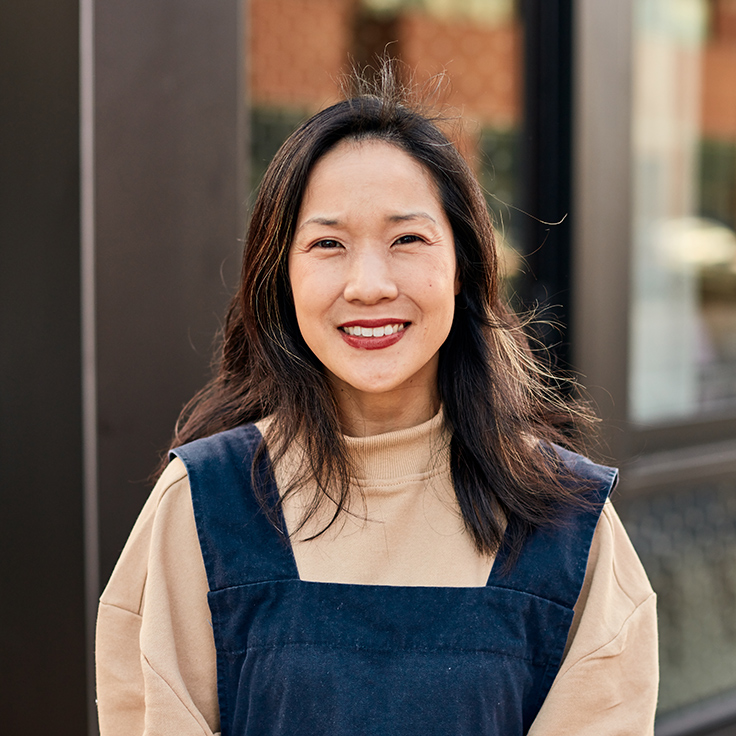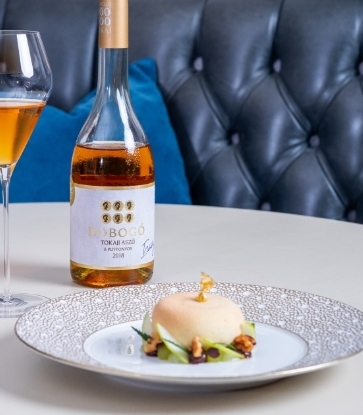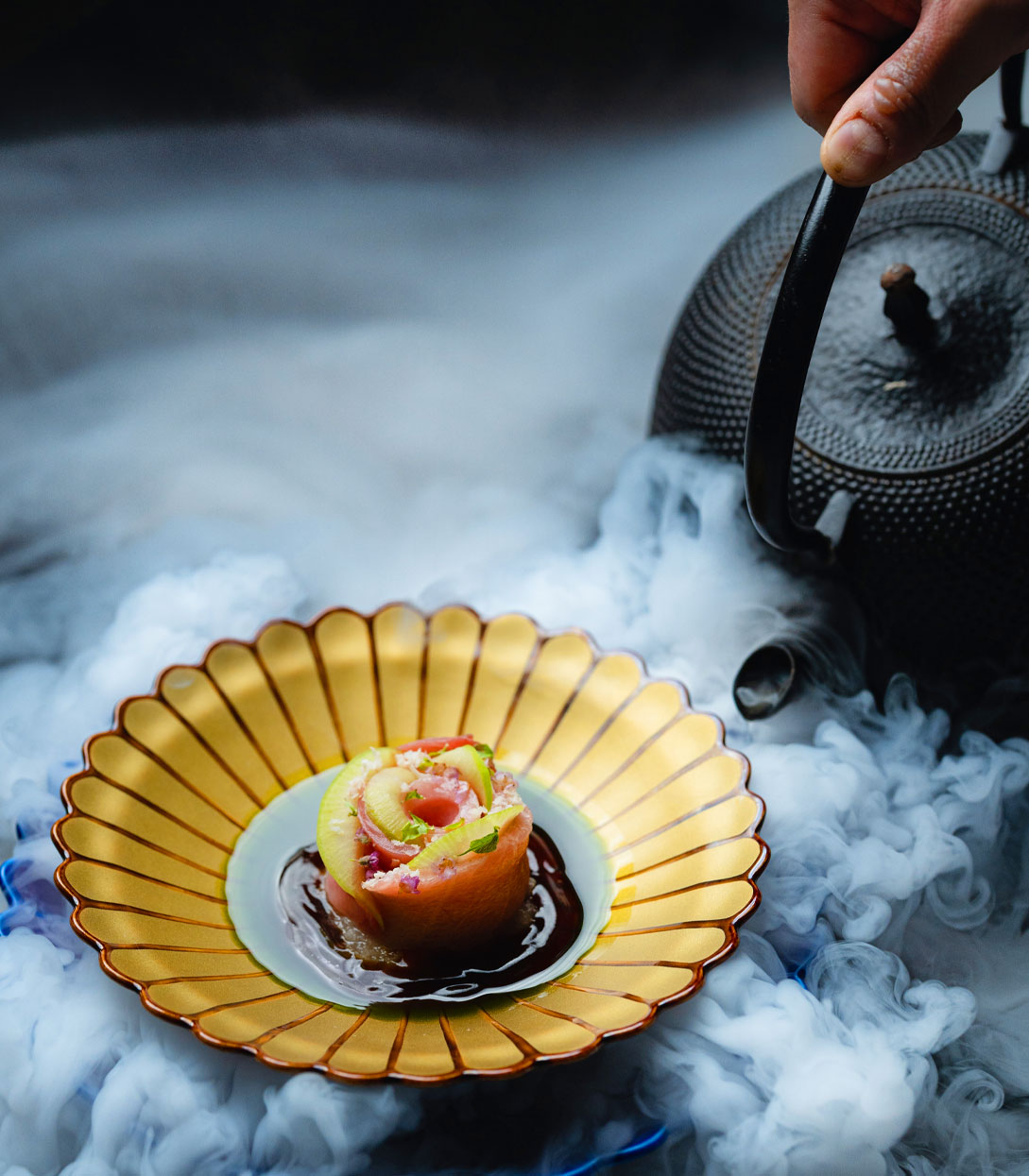The hottest trends in beauty, film and tv, and music across the United States have one thing in common: they're Korean. It’s been just over a decade since Hallyu 3.0, or the third Korean Wave, swept the country and Canada solidifying the desire for K-Beauty, K-Dramas, and K-Pop. However, the latest export taking the nation by storm is K-Food.
Dr. Jooyeon Rhee, an associate professor of Asian studies and comparative literature at Penn State University, says hallyu is no accident. "The Korean diasporas have played a huge role in maintaining and developing Korean cuisine for a long time," says Dr. Rhee. "[They] built the infrastructure in the form of grocery chains, restaurants, and even growing vegetables, as seen in Minari, that became crucial to meet the growing demand." Echoing this sentiment are some of the MICHELIN Guide chefs behind some truly stunning and visionary Korean meals. Below, we hear from them about the rise of K-food, why they think it's so popular, and the future.

Douglas Kim, chef/owner, Jeju Noodle Bar in NYC
I was born in Namwon, Korea, and came to the United States in 1994. The town I grew up in was surrounded by mountains. We always had meat and mountain vegetables, but we didn’t have easy access to seafood. I try to take inspiration [from] my childhood and turn it into our own dishes, but I also went to culinary school and worked at a French restaurant, so it’s a here and there.
My first job in New York in 1999 was at Nobu Downtown in Tribeca. I was shocked that this contemporary Japanese cuisine was so popular. I thought, why don’t Korean restaurants have this reputation? My goal was to promote Korean food, and my career was built on that. So I’m surprised Korean food is so popular, but in a way I was planning for it.
I think the popularity of K-pop, K-dramas, and K-beauty has helped a lot, but also it's something else. When I went to the Culinary Institute of America in 2004, there were very few Korean students [among them Yim Jung Sik of Jungsik; Sungchul Shim of Kochi; Eunjo Park, formerly of Momofuku Ssäm Bar; Max Soh of Oiji Mi.] Back then, even in Korea, the culinary scene wasn’t like it is now. Some CIA students, [like Eunhee Kim of The Green Table] went back to Korea. All these Korean chefs probably had a goal similar [to mine]: to promote their own food. As Korean chefs, how can we maintain these demands for Korean food?

Beverly Kim, chef/owner, Parachute in Chicago
I grew up eating a lot of Korean food because my mother was a great cook. So many dishes on Parachute's menu were inspired by this, but perhaps with more modern finesse. For example, the yukhaejang spicy brisket soup, the haemul pajeon (seafood pancake), the 30-day aged Slagel farm sirloin pulkogi, and the grilled mackerel, are all inspired by dishes I had growing up at home.
I'm so happy that Korean food is now popular in the US. When I was growing up in the '80s and '90s, there was a lack of awareness surrounding Korean cuisine and culture. I remember being embarrassed and made fun of because of the different aromas and ingredients in Korean cuisine. Even in the 2000s-2010s, it wasn't as widely known as other Asian cuisines. This might be a paradoxical answer: I'm not surprised [Korean cuisine is so popular] because it is such a delicious cuisine to me, but I am surprised by its popularity in comparison to the times I grew up in.

MJ Jeong, chef/owner, 156 Cumberland in Toronto
I grew up in Yeosu, a small town in the Southern part of Korea. It's an oceanside town so there was always a lot of fresh seafood. My favourite home-style dish is seolleongtang, which is ox bone soup. The broth is made by simmering ox bones, cartilage, brisket, and other cuts and seasoning with salt, pepper, and green onions. It's perfect to enjoy on a cold winter day. We don't have this on our current menu but it may be inspiration for a future dish!When I first moved to Canada in 2014 to attend culinary school, Korean restaurants were mainly targeted towards Korean guests. It seemed most [non-Korean] people were not familiar with the Korean food culture. I knew that Korean food had so much potential and would be enjoyed by all cultures. I wanted to present Korean cuisine in a way that was approachable and familiar, and I wanted to create dishes that were unique and added fun twists to traditional Korean dishes.
When we first opened, we had mostly non-Korean guests. I think Koreans lean more towards authentic, traditional, and homey Korean dishes, but recently we've had more Korean guests; it's always good to see them be surprised to see something very familiar yet very different. It creates for a fun dining experience.

Chris Oh, chef/owner um.ma in San Francisco
I ate a ton of Korean food growing up. Literally every meal was Korean or had a hint of Korean. Even for Thanksgiving there was always a bowl of kimchi on the table! My favorite dish growing up was galbi jjim also known as Korean braised short ribs. This was always a special occasion meal and made the house smell so good. My mom use to make so much so we could have it for days after.
We have a very diverse crowd coming into the restaurant, which was [our] goal, but it’s always nice to see other Koreans come in and praise the food because they are definitely our toughest critics!
If anything, I'm surprised it took this long for Korean food to become so popular. Korean food is so unique in so many ways, from the ever-so-popular tableside Korean barbecue to soul warming soups. I feel like the popularity of Korean food, K-pop, K-dramas, etc. have all mutually benefited from each other.

William Choi, co-owner, Hangawi in NYC
I grew up in Seoul eating primarily Korean food. My mom was a great cook and our family always had gatherings where my aunts and cousins came to our house to cook together for family reunions. Because meat was expensive when I was growing up, we had many vegetarian dishes at our family gatherings. Our menu at Hangawi is inspired by my recollections of these family gatherings.
Dishes like jap chae (vermicelli noodles with vegetable and mushrooms), sanchae bibimbap (bibimbap or stone bowl rice with mountain greens), pajeon (Korean pancakes), hobakjuk (pumpkin porridge), tteokbokki (spicy rice cakes), kimchi jjigae (kimchi hot pot) all inspired our plant-based menu at Hangawi.
When we opened Hangawi in 1994, we were perhaps one of the few Korean restaurants that were known to Americans. This was because of our deliberate efforts to market our restaurant to Americans not only as a Korean-inspired restaurant but a plant-based restaurant.
The rise of hallyu (the Korean Wave) that began around 2010, ignited by the Korean music and entertainment industry, has made Korean food very popular. If you visit 32nd St between Broadway and 5th Ave in Manhattan on any Friday or Saturday evening, you'll see many young people enjoying Korean food and nightlife.

Ellia and JP Park, owner and chef/owner at Atomix and Atoboy in NYC
Both JP and I grew up in Seoul. The foods of my [JP's] childhood and the memories associated with them have influenced many of our dishes. One that comes to mind are the sets of banchan (Korean side dishes) my mother would make when we were growing up. Banchan is typically prepared to be enjoyed for multiple seatings. It's easily enjoyed again alongside a warm bowl of rice and sometimes consumed on a bed of noodles, or often paired with another banchan. The balance of flavors experienced through banchan's versatility and its various combinations of flavors attributed greatly to [our] food at Atoboy and Atomix.
JP: I enjoy cooking with the abundant variety of seaweed. Gim (Korean laver), a favorite of mine since childhood, is a pantry staple as well as miyeok, tot, and maesaengi, which can be incorporated into various soups, banchan, and with rice.
Ellia: I recall being mesmerized when Psy's "Gangnam Style" came on the radio when we first moved to New York about 10 years ago. These days, Korean culture's influence goes well beyond K-pop, with impact and recognition being made in film, fashion, and art. For this we are grateful, as it certainly contributes to increased interest in our restaurants. We contemplate daily [on how] to ensure the betterment of our restaurants and [how] to be at pace with the continued growth and evolution of Korean culture.
© Chris Oh/Um.ma




















